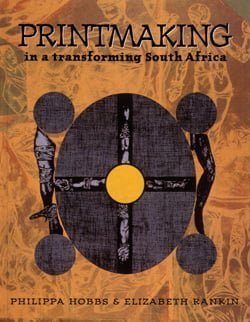‘Printmaking in a transforming South Africa’ | Artist: William Zulu
Born in 1956, William Ndabenhle Zulu became a student in 1977 at the renowned Rorke’s Drift ELC Art and Craft Centre, where he became acquainted with the linocut printmaking for which he has become well known.
The artist had become wheelchair-bound after a failed surgery for spinal deformity scoliosis, which he had struggled with since childhood. It was in hospital that he first began to experiment with art-making, and through the pursuit of his talents as an artist at the Art Centre, he began to develop a sense of independence and self-reliance.
After his time at Rorke’s Drift between 1977and 1978, the artist would struggle to gain sales off his art works until he was offered and trip to Germany and a solo exhibition by some foreigners he had met through his church. His first solo exhibition in South Africa came later at the African Art Centre in Durban, where he continued to show his work. Published in 2005, “Spring Will Come” is the artist’s biography and is also available in isiZulu as “Liyoze line Nangakithi” after a 2010 translation.
The English edition of the artist’s biography is available from David Krut Bookstores. Also available and featuring the work of William Zulu is “Printmaking in a Transforming South Africa“, by Elizabeth Rankin and Philippa Hobbs, an inclusive guide to printmaking processes and the South African artists who have employed the various techniques in their practices.
“In South Africa, the use of titles has been important in works with a social agenda. This use ties in, too, with a strong tradition of didactic content in printmaking practise at Rorke’s drift. There, an emphasis on narrative content, still prevailing in the work of Zulu, Ziqubu, Soha and many other past students, often prompted the incorporation of text in the print itself and the use of sequential scenes, divided into zones to clarify the story, as in the black-and-white relief prints made in the earliest days of the capital art centre by Azaria Mbatha and John Muafangejo.
As we have seen in Zulu’s Peace Now!, the use of text inscribed into the print (despite the difficulty of having to carve it inverse) assures its status, and makes it apart of the design as well as the meaning of the work.”
Philippa Hobba & Elizabeth Rankin, 1997, Printmaking in a Transforming South Africa, David Philips Publishing, pg.43
Text by Mthabisi Sithole


